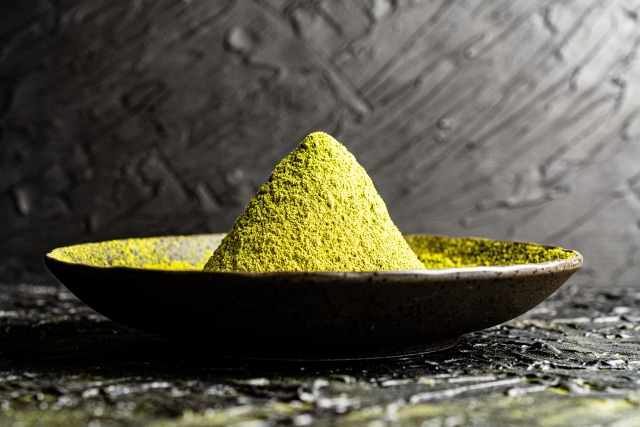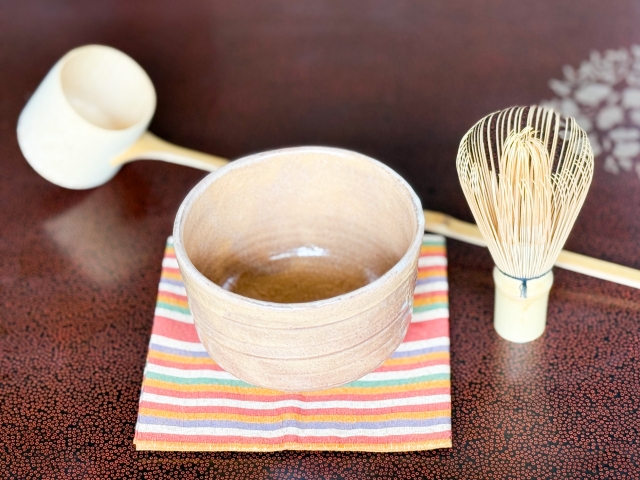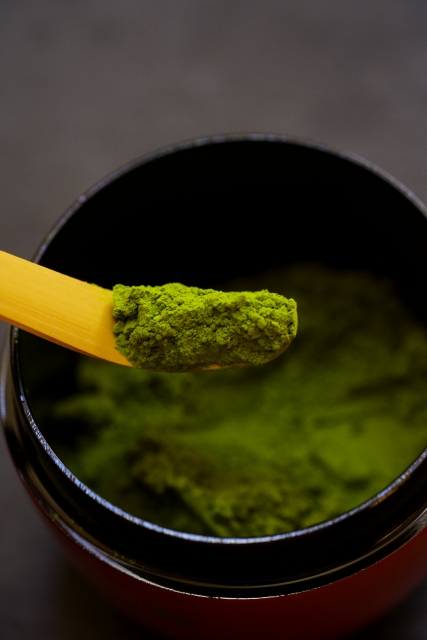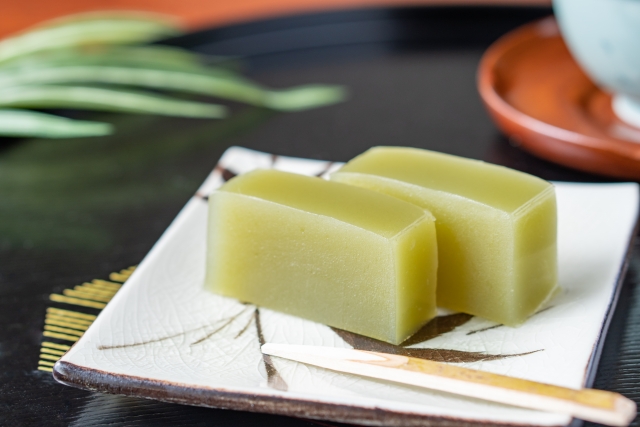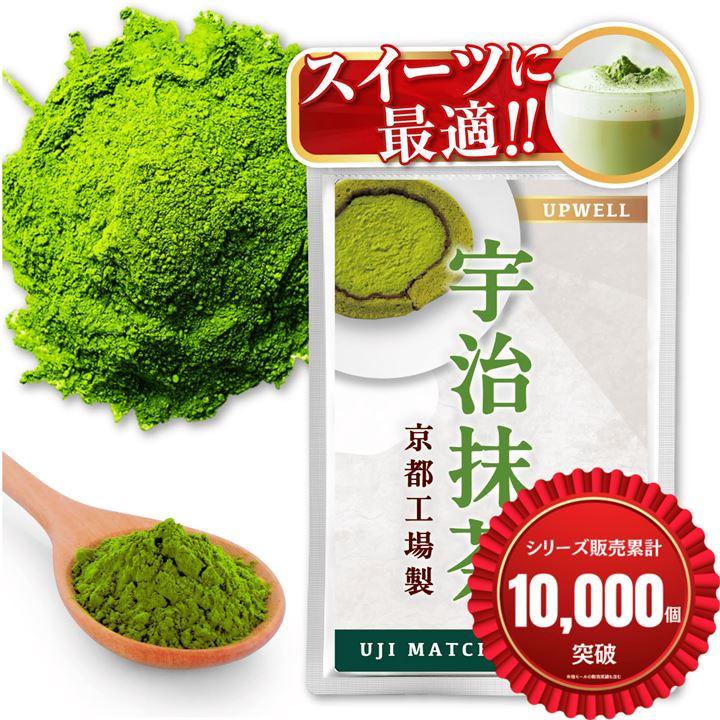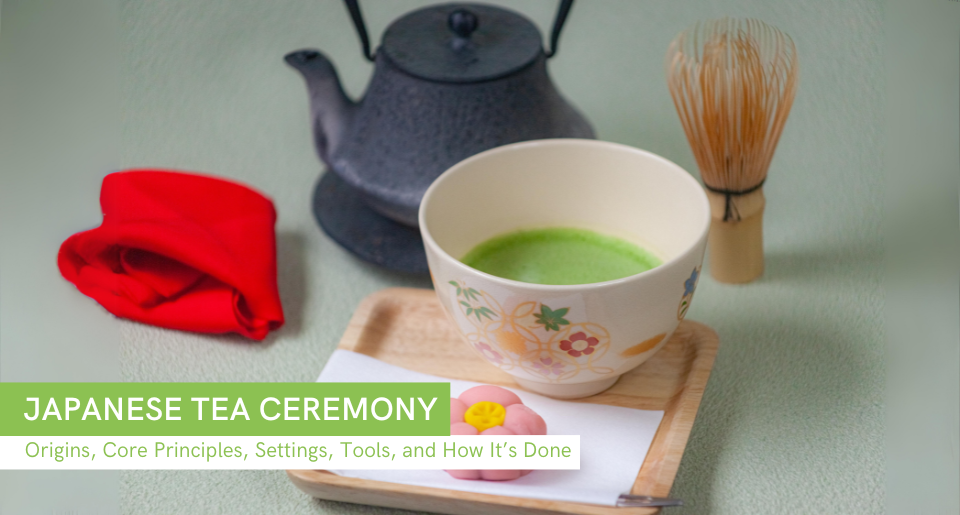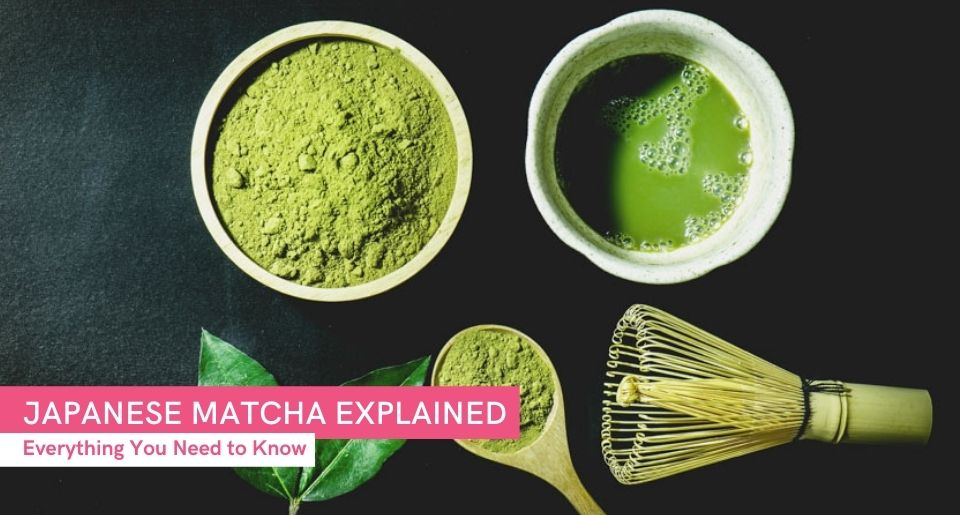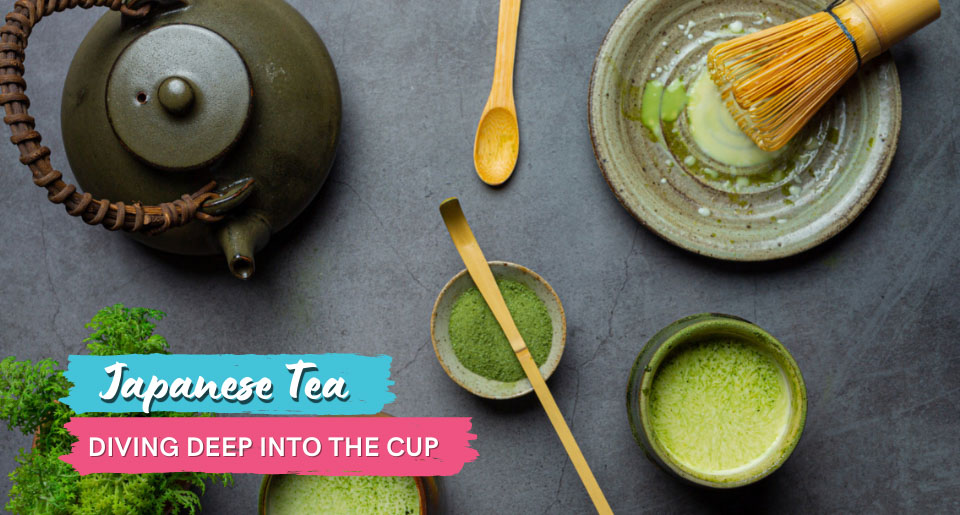Contents
- What exactly is matcha?
- Quick matcha history and how it became Japan’s tea icon
- How authentic matcha is made in Japan
- Tools you’ll actually use in preparing matcha
- 5 Easy steps to making matcha like a pro
- Buying matcha: what to look for (and what to ignore)
- What are the health benefits of matcha?
- Storage and shelf life (maximize flavor and color)
- Common matcha making mistakes (and easy fixes)
- 5 Must-Try Japanese sweets that pair heavenly with matcha
- Where to buy authentic Japanese Matcha
- FAQS
- A short matcha glossary (you’ll see these words a lot)
- About The Writer
Japanese matcha converted me from “matcha tastes like grass” to “I need matcha in my life!”
If you think matcha is just a cute aesthetic drink, Japan would respectfully disagree. Here, this lush green “gold” is treated as a full craft from start to finish. Everything is measured and perfected, starting in the tea fields and continuing through the grinding process and ceremonial tools, all before it ever reaches the cup.
That said, if you’re serious about matcha like me and won’t settle for anything less than that rich, velvety green goodness, this comprehensive A-to-Z guide is just for you.
By the time you’ve learned all the secrets usually kept behind the tea-room curtain, you might as well consider yourself unofficially certified matcha expert (bragging rights granted!).
What exactly is matcha?
Matcha (抹茶) is powdered Japanese green tea made by stone-milling specially grown leaves called tencha. One key difference about matcha is how it’s grown. The tea bushes are covered with bamboo mats so they mature in shade rather than open light.
With limited light, the plant boosts its chloroplasts to capture more energy, and all that extra chlorophyll is what gives matcha its glowing green color and rich, umami-forward taste.
Since the whole leaf is ground into powder, you consume all of its nutrients, and the flavor is richer and more layered than regular brewed tea. The taste of Japanese matcha should be bold, earthy, and gently sweet—not the grassy hit people expect from non-authentic versions.
- Not all green tea powder counts as matcha: If the leaves weren’t shade-grown as tencha and finished the right way, what you’re getting is just generic powdered green tea, not the real thing. The growing and making methods are what make matcha, well, matcha!
Quick matcha history and how it became Japan’s tea icon
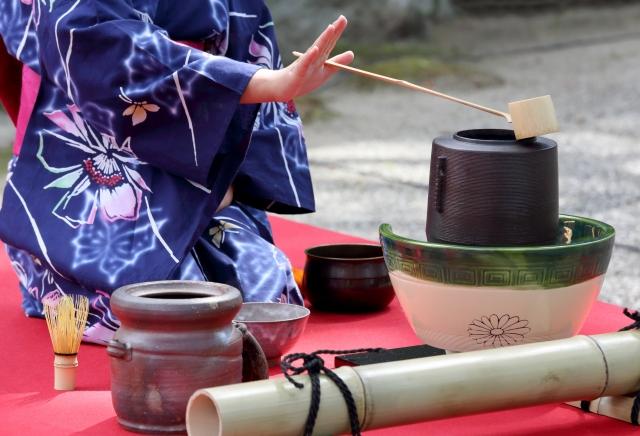
Around 800 years ago, during the Kamakura era, a Zen master named Eisai brought tea seeds back from Song-dynasty China and unintentionally kick-started Japan’s earliest tea culture.
Back then people whisked tea in powdered form rather than brewing leaves, and Eisai even wrote a text called Kissa Yojoki that explained how to grow it and why it was good for the body. Another monk, Myoe, helped spread the crop by planting seeds in places like Uji and Ninnaji, which slowly transformed Uji into a tea paradise thanks to its mild climate and the mist rolling in from the Uji River.
Later on, Ashikaga Yoshimitsu championed Uji tea so enthusiastically that it replaced Toganoo as the center of production. Over the centuries, Uji producers kept innovating, giving birth to creations like sencha and gyokuro, which shaped Japanese tea culture into what it is today.
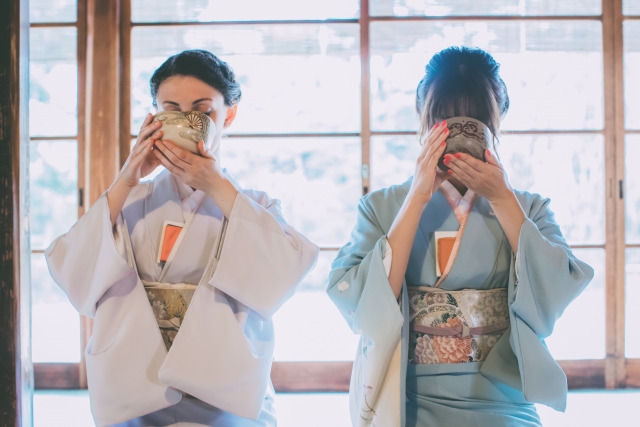
The roots of the Japanese tea ceremony (chanoyu) trace back to Zen practice during the Muromachi era, eventually reaching Sen no Rikyu, who shaped it into the cultural tradition we know today. The ceremony rose to prominence thanks to backing from influential figures like Nobunaga and Hideyoshi, eventually cementing Uji matcha as the choice of the elites.
Today’s matcha is a far cry from its once-exclusive ceremonial role—now it’s a café staple and a go-to flavor for sweets and drinks. People enjoy it with all types of milks, sparkling water, and a long list of creative twists that helped cement it as a dessert staple, too.
The wave of global interest in Japanese food, paired with matcha’s health benefits, is what sent its popularity soaring abroad.
How authentic matcha is made in Japan
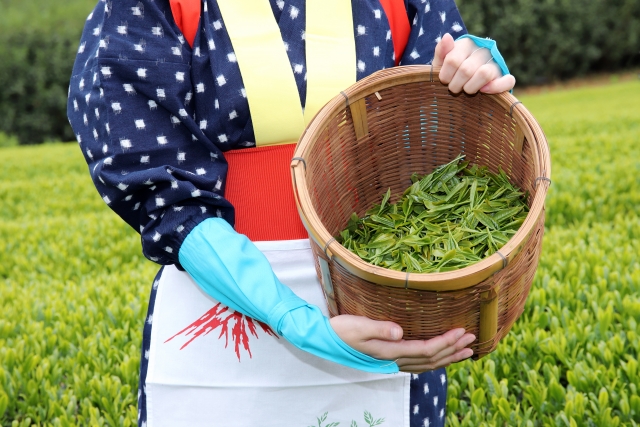
Matcha tea leaves are harvested only once a year after the winter dormancy. The fresh new leaves grow and are picked within a short window of less than two months.
By mid-April, when the new buds are just about to pop, the tea bushes are covered with reed screens that block out over half the sunlight. About ten days later, straw is layered on top for even deeper shade.
With so little light, the leaves grow thinner and wider to absorb every bit they can. This shading boosts chlorophyll, turning the leaves a vivid green and giving the tea a richer umami flavour with less bitterness and a fuller, rounder taste.
A few days after the straw is added—usually from early to mid-May—the young leaves are carefully picked by hand. They’re taken straight to the processing facility and steamed right away to stop fermentation and preserve their bright green color.
After steaming, the leaves are dried in two stages, with the final step done on a conveyor belt that moves through a brick oven called a hoiro. Once fully dried, the leaves remain whole and are now known as tencha.
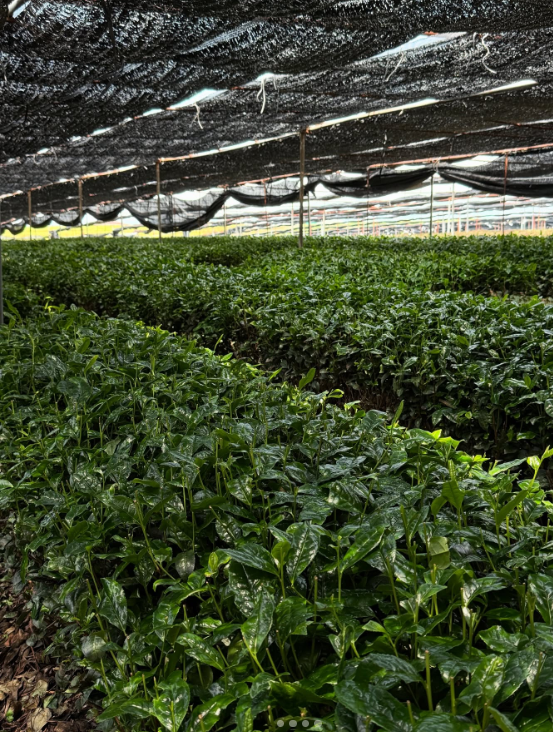
(courtesy of @thea_matcha)
They are stored in large sealed wooden boxes and kept refrigerated until needed. Small batches are taken out over time for the next round of processing.
The dried tencha leaves are first cut into a uniform size, then repeatedly sifted and cleaned to remove stems, veins, and any remaining debris. After that, they’re dried again to bring out the distinct aroma of tencha.
At this stage, the quality of each batch is judged by appearance, color, fragrance, and flavor. Leaves from different cultivars and growing regions are then blended to achieve a balanced and consistent taste that matches the profile of named matcha varieties.
Once the blend is finalized, the tencha is ground slowly on precision stone mills into an ultra-fine powder, developing its fragrance and elevating the flavor even further.
Tools you’ll actually use in preparing matcha
Matcha tools aren’t just for ceremonial aesthetics—they’re essential for getting the authentic taste, foam, and texture.
These are the practical tools you’ll actually reach for in real preparation:
- Chawan (茶碗 — tea bowl): Wide enough to whisk matcha properly and has become one of the most essential tools in tea preparation, appearing in a wide range of forms and aesthetics.
- Chasen (茶筅 — bamboo whisk): A handcrafted tool made from one piece of bamboo that brings powder and water together into a creamy froth.
- Chashaku (茶杓 — bamboo scoop): A traditional bamboo scoop used to measure and transfer matcha powder, designed with a gentle curve that makes it easy to handle while also adding to the beauty of the ceremony.
- Sifter/tea strainer (抹茶篩 — furui): Although it isn’t used during the ritual itself, a matcha sifter is great to have on hand because it turns the powder into a silky, clump-free mixture before whisking.
5 Easy steps to making matcha like a pro
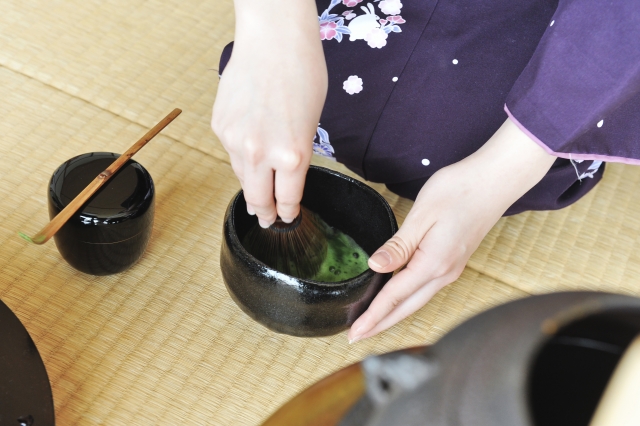
Matcha is easy in theory but surprisingly tricky in practice — one small misstep can throw off the whole bowl.
Here’s a simple beginner-friendly method to help you get it right:
Step 1 — Sift
- Warm and dry your bowl.
- Sift the matcha in advance so it blends fast.
- Use 2 chashaku scoops or 1 level teaspoon or 1 flat measuring spoon.
- Aim for about 1.5 g.
Step 2 — Prep the water
- Use soft water for the best taste.
- If using tap water, filter it or boil uncovered to vent chlorine.
- Always bring water to a full boil once.
- Winter target 75–85°C.
- Summer target 70–80°C.
Step 3 — Measure
- Pour 70 ml of hot water into one bowl.
- A small measuring cup is recommended.
Step 4 — Whisk
- Add water to the bowl with matcha.
- Whisk with a chasen in quick M and W strokes.
- Stay off the bowl floor once it is mixed.
- Whip until a fine creamy foam forms.
- Skim the surface lightly to pop big bubbles.
- Finish with a small circle in the center for a neat mound.
Step 5 — Serve or chill
- Drink right away for peak aroma.
- For iced matcha, add a few ice cubes.
- For a lighter style, whisk less for a thinner, non-foamy finish.
Water notes
- Slightly acidic water suits green tea.
- Many Japanese mineral waters are soft and ideal.
- Mineral water should also be boiled for 5 minutes before use.
Buying matcha: what to look for (and what to ignore)
Authentic Japanese Uji matcha available on ZenPlus.
Matcha has successfully crossed borders and become a worldwide favorite, showing up in everything from luxe coffee shop menus to desserts abroad. But because there’s no internationally recognized standard, anything green and powdered is often marketed as “matcha,” even when it isn’t.
Look out for these signs to avoid overpaying for fake or low-grade powder:
- Leaf & Process: Shade-grown tencha, steamed, stone-milled.
- Color: Vivid spring green (not dull olive).
- Aroma: Sweet, creamy umami (not fishy/seaweedy).
- Texture: Ultra-fine silky powder (no grit).
- Whisk Test: Micro-foam with tiny, velvety bubbles.
- Label: Authentic matcha often comes from well-known Japanese regions like Uji, Nishio, Yame, or Kagoshima.
- Packaging: Real premium matcha is sold in airtight tins, glass jars, or sealed plastic containers to protect it from air and keep its flavour and freshness intact.
- Ignore/Avoid: Unregulated “ceremonial/latte grade,” vague origins, “powdered green tea” (not tencha), additives/flavorings, gritty feel, bargain-basement prices.
- Source: The most reliable source will always be Japan directly, either by visiting local shops or shopping through Japanese marketplaces like ZenPlus.
What are the health benefits of matcha?

Matcha brings flavor and wellness in one cup.
Because you’re drinking the whole tea leaf, matcha delivers a stronger dose of nutrients, antioxidants, and a gentle lift of caffeine compared to regular green tea.
Research has linked these benefits to better liver support, improved heart health, and even help with healthy weight management (per Healthline).
Enjoying matcha every day is perfectly fine for most people, but it still contains caffeine and may have small traces of pesticides depending on the quality. Even the good compounds, like catechins, can be too much if overdone.
The sweet spot is usually about 1–2 cups a day, or up to 2 teaspoons of powder.
Storage and shelf life (maximize flavor and color)
Fresh matcha should look bright and vibrant, with a clean, balanced taste. A little smart storage goes a long way, so here’s how to keep it tasting premium down to the last serving:
- Core rule: Store in a dark, cool, dry place with an airtight seal.
- Enemy factors: Heat, humidity, light air, and odor all take a toll on fresh matcha.
- After opening: Re-seal fast and finish soon forthe best taste.
- Container choice: Use opaque tins or high-barrier zip bags with minimal headspace.
- Refrigeration: Keep matcha in the fridge, whether sealed or opened.
- Freezing: Unopened cans can be frozen to maintain freshness for several months.
- Warm-up step: Let chilled or frozen matcha reach room temperature before opening to prevent clumping.
Odor control: Keep away from spices, coffee, and other strong smells. - Portioning: Split a large pack into small tins to limit air exposure.
- Scoop care: Use a clean, dry spoon or chashaku only.
- Moisture caution: Avoid steam and wet hands during prep and sealing.
Common matcha making mistakes (and easy fixes)

- Water too hot: Water straight off the boil can over-extract the tea and make it bitter. The sweet spot is around 80°C, which you can reach by letting the water cool for a moment before using it.
- Skipping the sift: Leads to lumps and hard whisking. A 10-second sift pays off instantly.
- Wrong whisk motion: Use quick “M/W” strokes when whisking—this fast zigzag motion with the bamboo whisk is what creates that smooth, airy layer of crema on top.
- Old or poorly stored powder: A lack of vibrancy in both flavor and color is a giveaway that the powder is stale; be sure to check freshness dates and storage conditions.
5 Must-Try Japanese sweets that pair heavenly with matcha
While matcha is delicious on its own, it’s even more special when enjoyed the traditional Japanese way with Wagashi (和菓子). These classic sweets pair perfectly with the gentle bitterness and velvety texture of green matcha.
- Yokan (羊羹): A traditional wagashi made from red bean paste, agar, and sugar. It’s usually sold in a block and sliced to serve, and its gentle sweetness balances the slight bitterness of matcha.
- Daifuku (大福): A popular Japanese sweet made by wrapping sweet red bean paste inside a soft layer of mochi.
- Monaka (最中): Crisp wafer shells with azuki inside. I personally had it in Kyoto with matcha and would 100% recommend it—love the crack then the slow sweetness!
- Dorayaki (どら焼き): Dorayaki is a classic wagashi most people recognize from Doraemon. It’s a drool-worthy two soft, pancake-like cakes sandwiched around sweet red bean paste.
- Mochi (餅): Mochi and matcha are already a perfect duo, but matcha mochi is the ultimate level of mochi heaven!
Where to buy authentic Japanese Matcha
Authentic Japanese Uji matcha available on ZenPlus.
Strolling through the side streets of Arashiyama made me a true believer that buying matcha in Japan is the gold standard—the quality is unmatched and the flavour is on another level. The shops here bring together some of the finest teas in the world, along with authentic matcha treats that can only be found fresh in Japan.
But of course, not everyone can hop over to Kyoto or visit a matcha-famous region whenever they want, and I know that feeling well after spending so much time abroad and craving a proper matcha bowl.
Just look at the one I had below—it tasted incredibly authentic, and with the matcha mochi on the side, it was honestly heaven on earth.
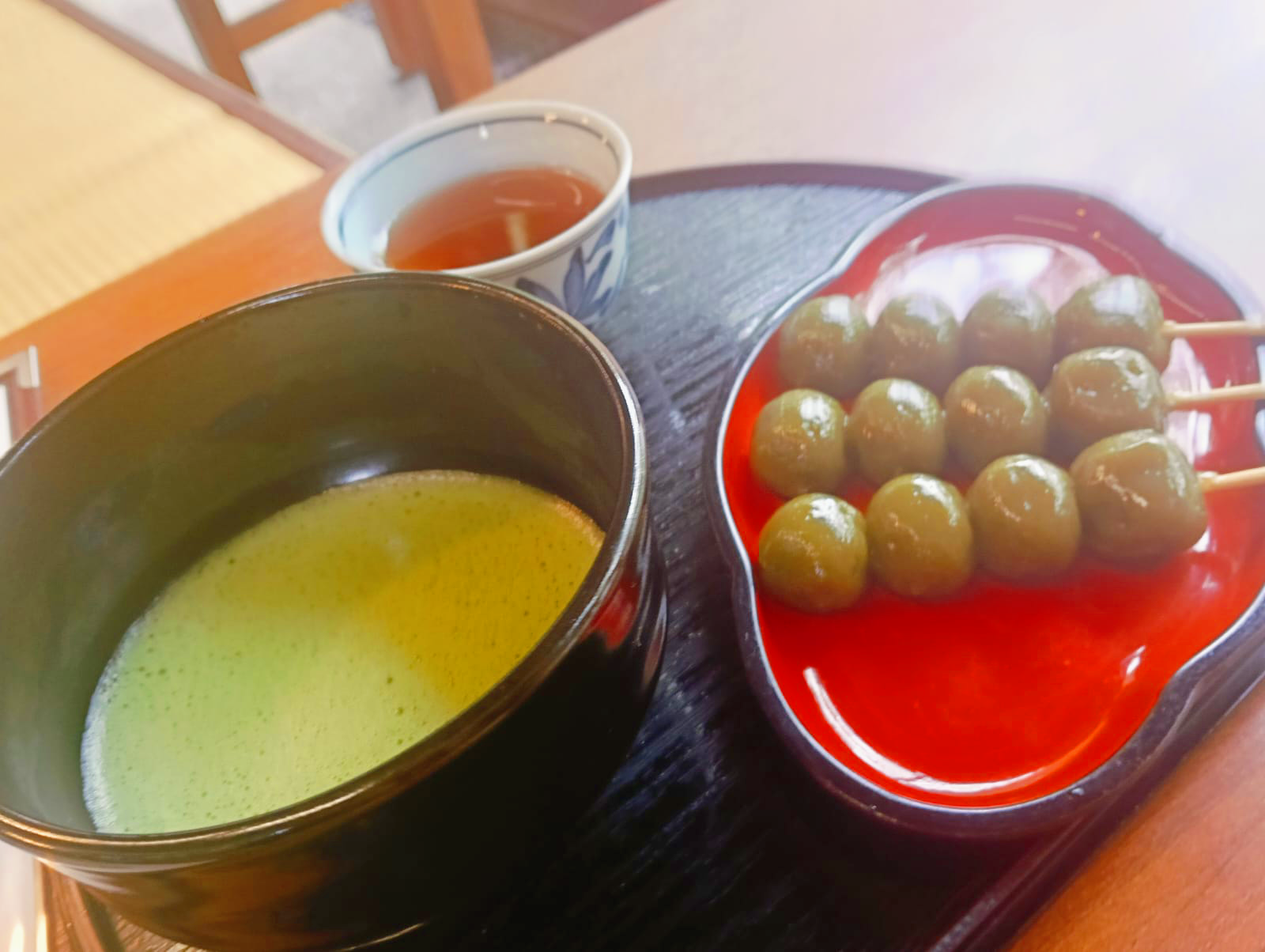
Thankfully, even when I’m away from Japan, I can still order the real thing through Japan-based marketplaces like ZenPlus that ship worldwide. It lists products directly from Japanese sellers, which means you get direct access to real Japanese matcha brands in one place—including Uji tea / Kanbayashi, and Senkien.
I don’t know about you, but as a newly converted Japanese matcha addict, having this kind of easy access feels like a safety net for my sanity.
FAQS
Is Chinese “matcha” the same as Japanese matcha?
No, they’re not the same. Japanese matcha is bright and vivid, almost glowing green, whereas Chinese matcha often looks flatter and slightly dull. The faster mechanical grinding used in China lowers both color quality and flavor.
Do I need a bamboo whisk to make matcha?
You don’t have to use a bamboo whisk to make matcha, unless you want the full traditional experience. The chasen creates that perfect froth, keeps the flavor clean, and carries the ritual that makes matcha feel special.
How much caffeine is in a cup of matcha?
Matcha naturally contains caffeine, though usually less than coffee—about 70mg per cup compared to coffee’s 100–140mg. The big advantage is that matcha keeps you focused for longer and doesn’t spike your energy levels all at once.
How long does matcha stay fresh after opening?
Opened matcha keeps well for about 2 to 3 months, but its vibrancy can start fading after the first month. That’s why it should be stored in the fridge once opened and used fairly quickly for the best taste.
A short matcha glossary (you’ll see these words a lot)
- Tencha (碾茶): The unrolled, refined leaf that becomes matcha when milled.
- Oika / Kabuse-ko (覆い香): The distinctive, sweet-savory “covered” aroma from shaded cultivation.
- Kabusecha (かぶせ茶): The name combines kabuseru, meaning “to cover,” and cha, meaning tea. It’s essentially shaded sencha, and because of that extra care, it’s considered a higher-grade version of regular sencha.
- Chawan (茶碗) / Chasen (茶筅) / Chashaku (茶杓): Bowl, whisk, and scoop used in matcha preparation.
- Yabukita / Okumidori / Samidori: Matcha cultivars play a major role in shaping the flavour, aroma, and texture of authentic Japanese matcha.
About The Writer
Meet Mariam — a fashion writer who lives and breathes all things vogue and glamour. For her, the most therapeutic aspect of fashion goes beyond simply shopping for the latest styles that appear in stores; it’s fully experiencing this glamorous world from the little details to the big moments (there's nothing quite like the thrill of flipping through a sleek fashion magazine, is there?).


